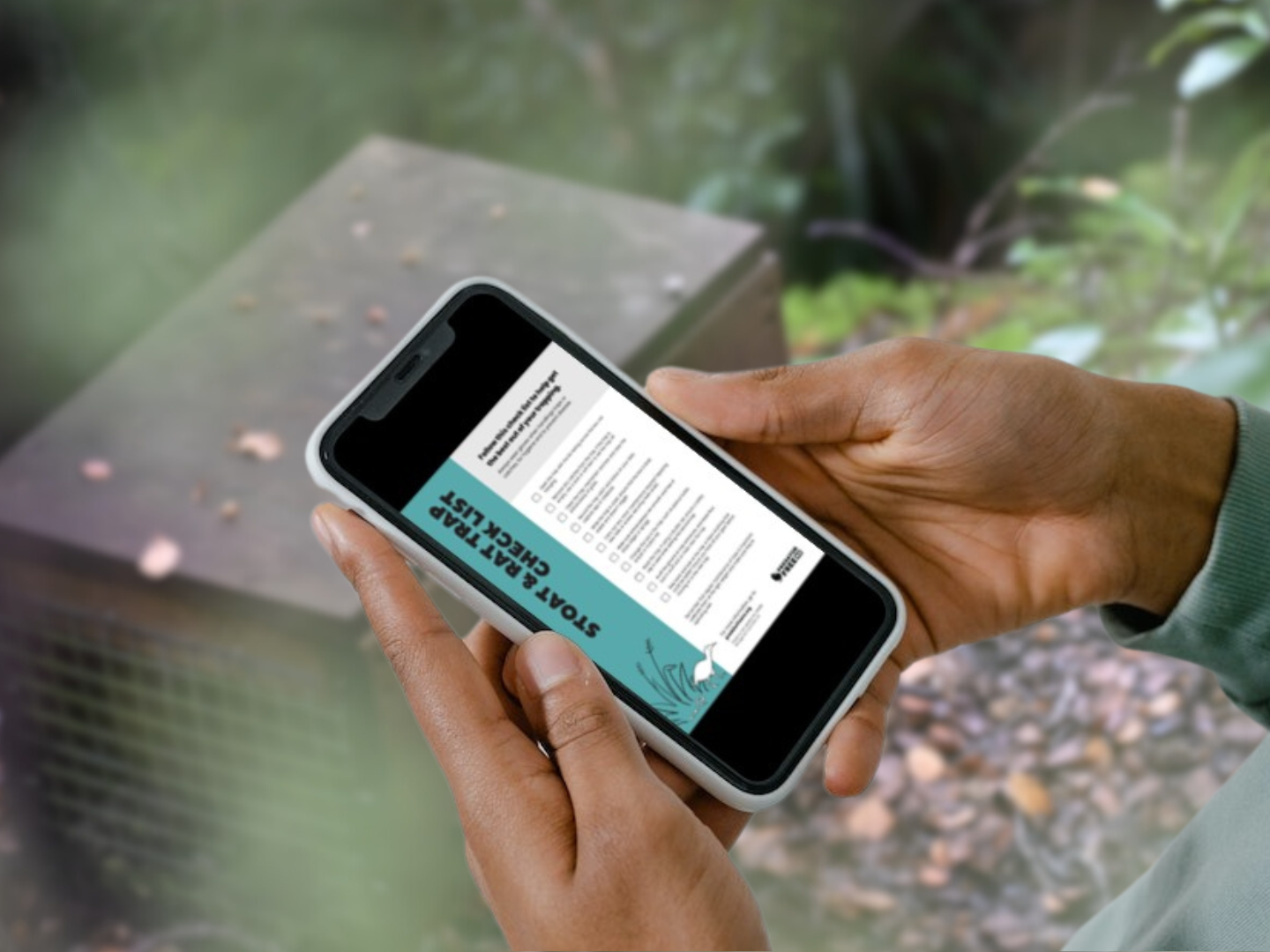Sometimes, when running a trap line or training new volunteers, having a set of reminders is useful.

Our new trap checklist (PDF, 297KB) has streamlined the process, ensuring efficiency and safety – you can download, print and share it with your community, or hang it in your shed (it matches nicely with our predator control calendar).
Here’s how you can make the most of our trap checklist.
- Wear protective gear: Before handling traps or catches, always wear gloves. This not only protects you from potential diseases but also doesn’t transfer your scent to the trap.
- Proper trap handling: When opening the trap, ensure the lid rests across the box instead of hanging. This prevents any accidental injuries and maintains the trap’s integrity.
- Removing catches: If the trap has caught something, carefully remove the catch. For empty traps, use a sock or soft item to set off the trap, minimising any potential harm or damage to trap.
- Thorough cleaning: After removing catches, clean the trap, mechanism, and box meticulously. Also, clear the entranceway of any grass or debris to ensure clear line of sight.
- Record keeping: Record the trap catch and its status using your preferred data capture app or notebook. This helps in tracking trends and making informed decisions.
- Maintenance: While the trap is unset, ensure the box is stable and level. Conduct minor maintenance tasks like applying new nails or screws and securing mesh ends for optimal performance.
- Safety measures: Smooth out entranceways and eliminate any sharp edges or sprags on entrance mesh that could cause harm to animals or interfere with trap functionality.
- Lure replacement: Change the lure in the trap periodically to maintain its effectiveness. Whether it’s peanut butter, erayz, or mutton fat, ensure it’s fresh to attract pests effectively.
- Resetting the trap: After maintenance and lure replacement, reset the trap. If using a double-set, always use a safety clip to prevent accidents while setting the second trap.
- Marketing: Scuff the ground at trap entrances and apply blaze flour lure in the scuff and on nearby trees. This enhances the trap’s visibility and attractiveness to pests.
- Evaluation: Step back and assess the trap’s setup. Is there anything that could be improved? Take note of any adjustments needed before moving on to the next trap.
Remember, how you set and maintain your traps will dictate your outcomes; proper trap maintenance and handling are essential for successful predator management. So, equip yourself with the necessary tools and knowledge, download our handy trap checklist, and let’s work together towards a healthier, predator free environment.


